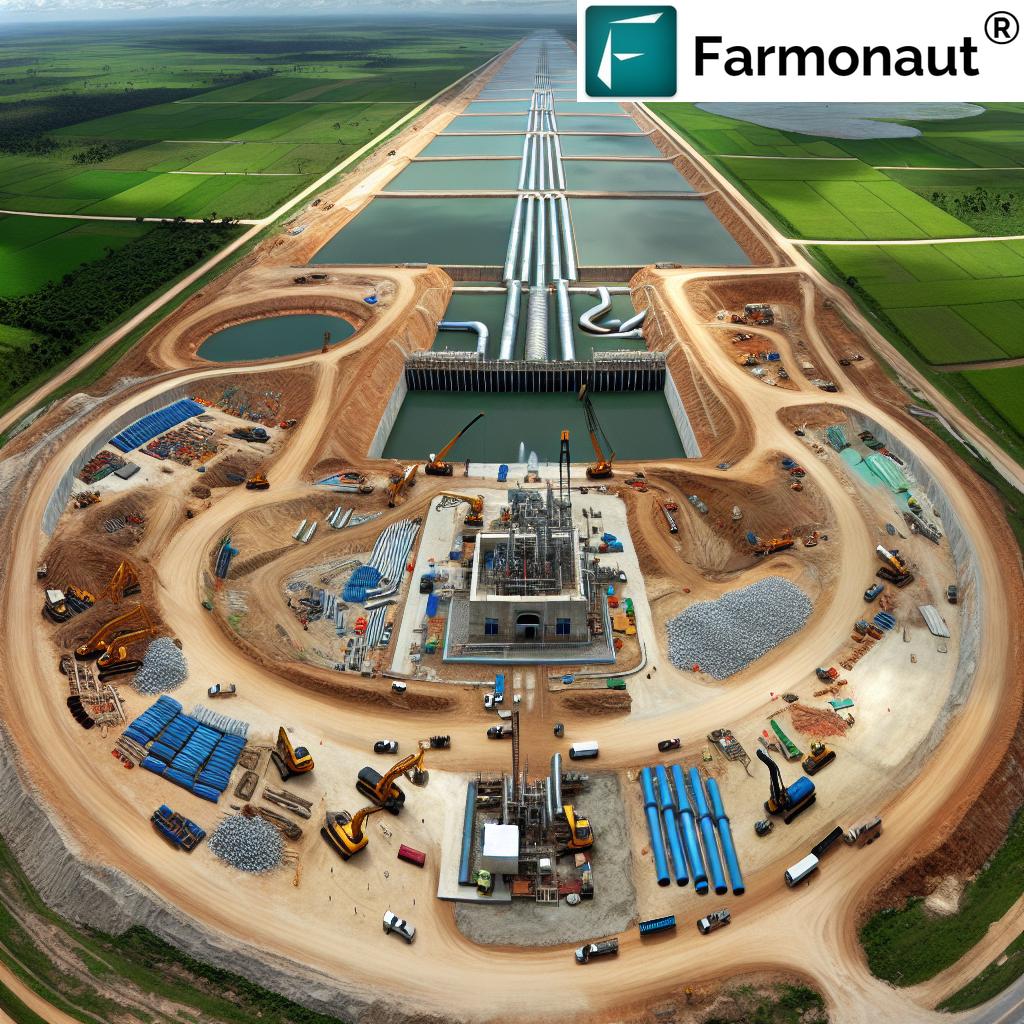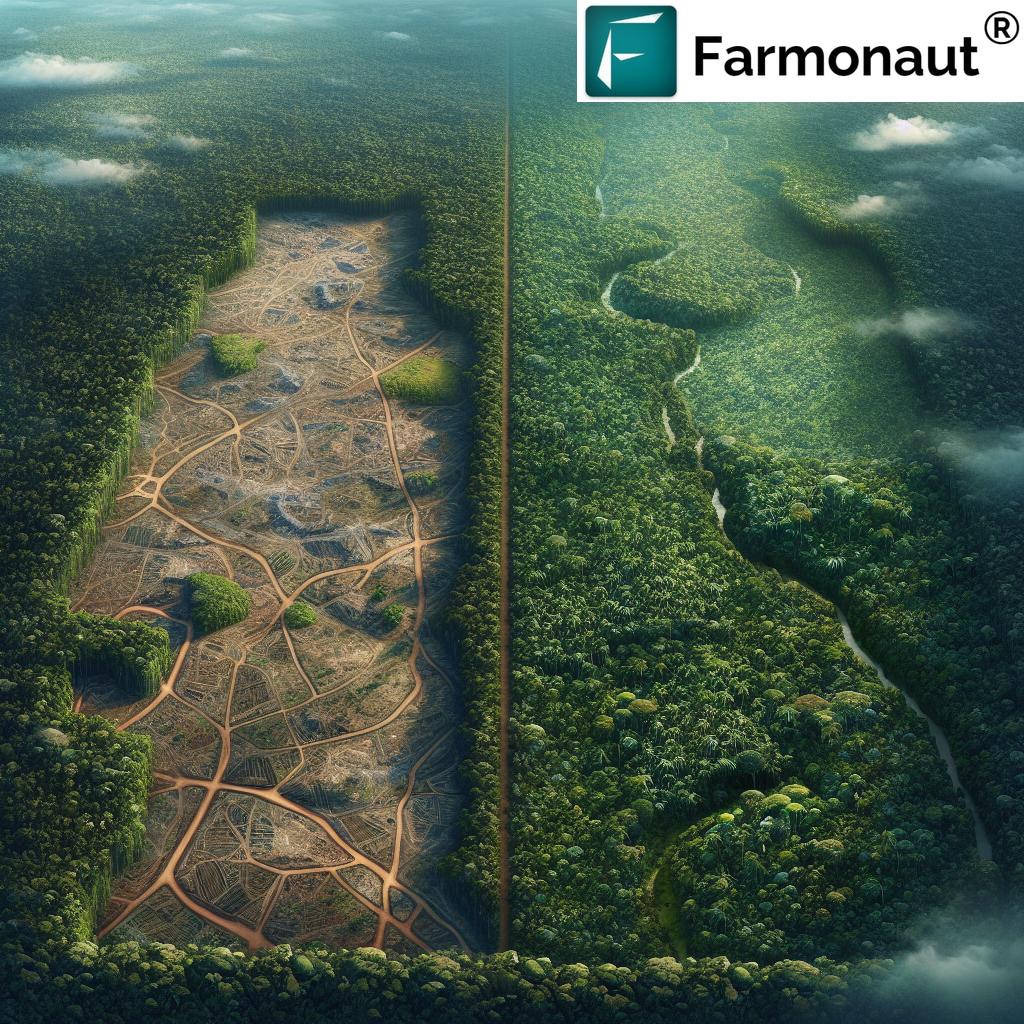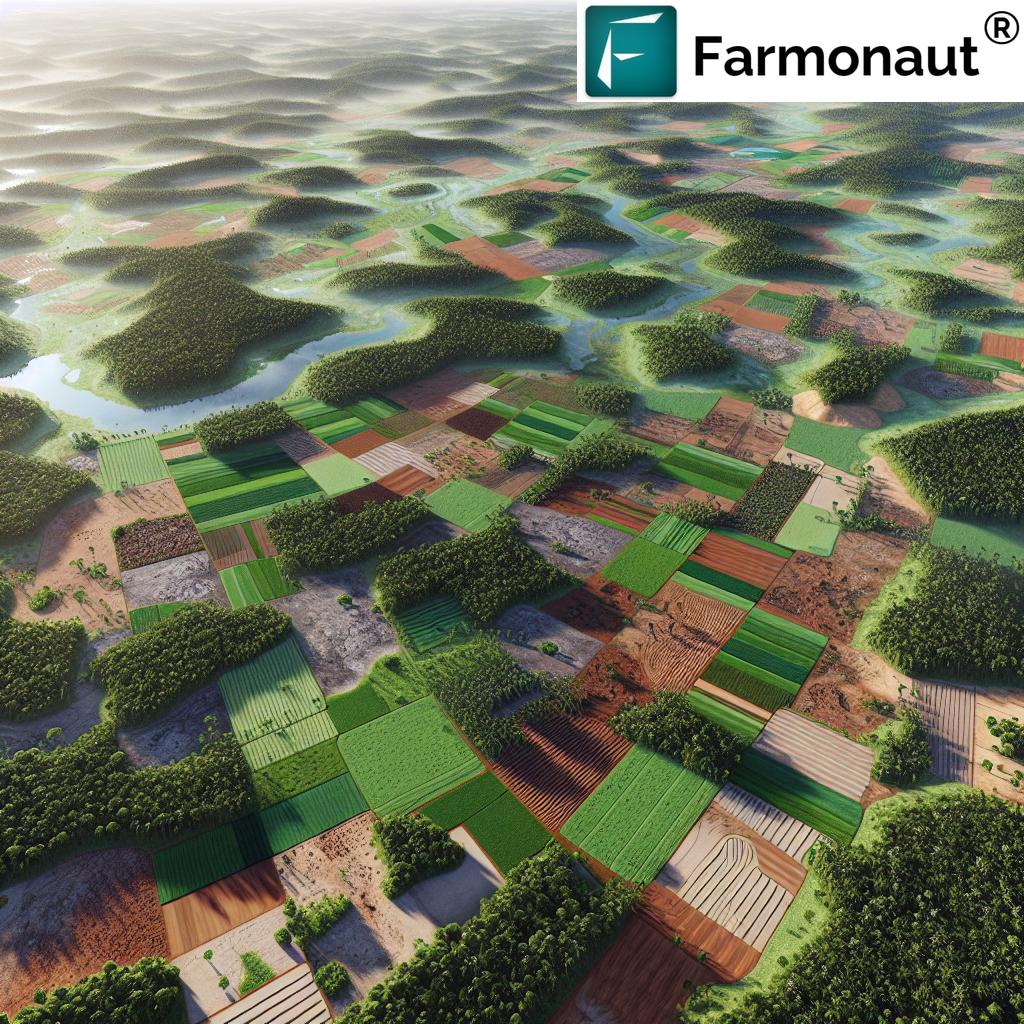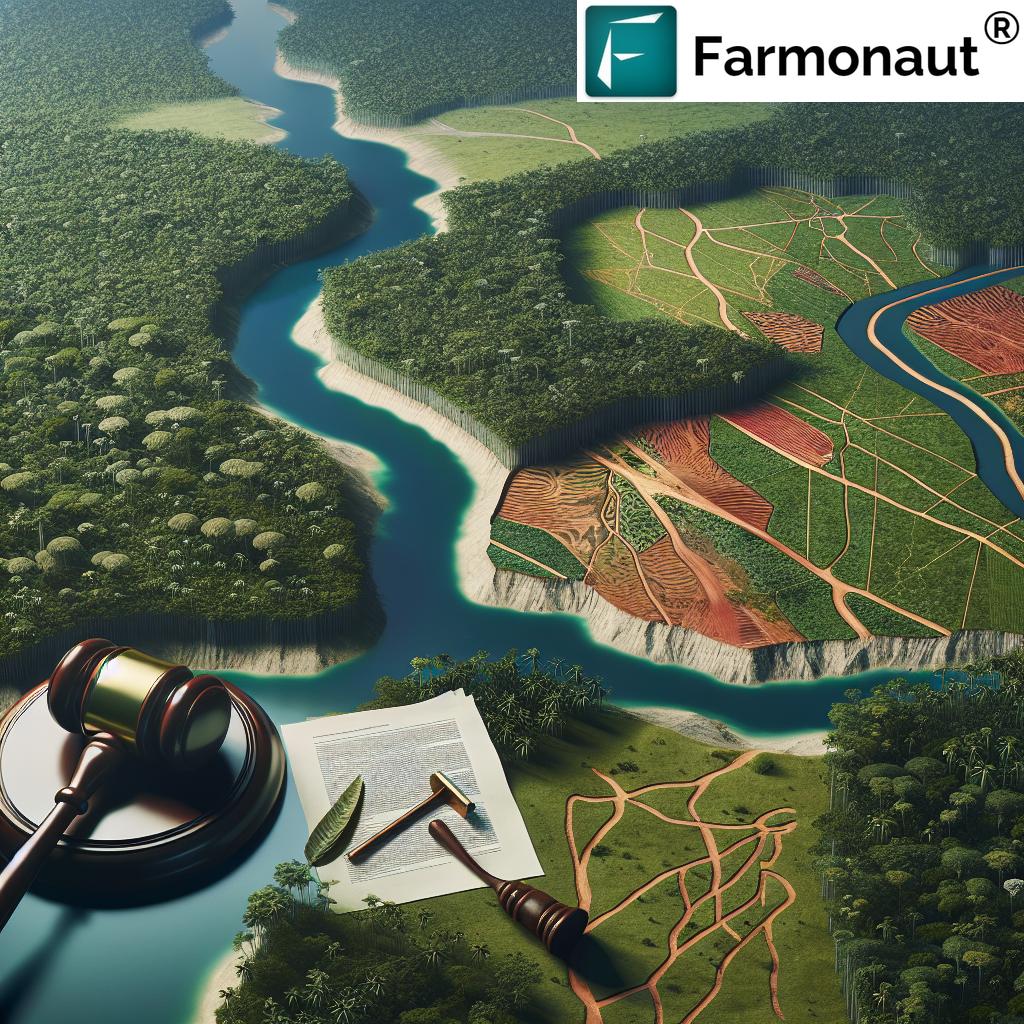Guyana’s $800M Irrigation Project: Challenges and Controversies in Agricultural Infrastructure Development
“Guyana’s $800M Belle Vue irrigation project is only 10% complete despite significant financial disbursements.”
In the realm of agricultural development, we often encounter complex challenges that test the resilience and efficiency of government initiatives. Today, we delve into a pressing issue that has captured the attention of Guyana’s political landscape and agricultural sector: the controversial $800 million Belle Vue pump station contract. This project, intended to bolster Guyana’s irrigation infrastructure, has instead become a focal point of scrutiny, raising important questions about project management, procurement processes, and the overall state of agricultural development in the country.
As we explore this multifaceted issue, we’ll examine the various aspects of the Belle Vue irrigation project, its progress (or lack thereof), and the wider implications for Guyana’s agricultural sector. Our analysis will cover the political debate, technical challenges, and the potential impact on future infrastructure projects in the region.
The Belle Vue Irrigation Project: An Overview
The Belle Vue pump station project represents a significant investment in Guyana’s agricultural infrastructure. With a budget of $800 million, it was designed to enhance irrigation capabilities, potentially boosting agricultural productivity in the region. However, the project’s execution has fallen far short of expectations, leading to a heated debate in Guyana’s National Assembly and beyond.
Key points of concern include:
- Project completion stands at a mere 10% despite substantial financial disbursements
- Questions about the procurement process and contractor selection
- Doubts about the technical expertise of the chosen contractor
- Calls from opposition members for contract termination
These issues have not only put the project under intense scrutiny but have also sparked a broader conversation about the management of large-scale agricultural infrastructure projects in Guyana.
The Controversy Unfolds: Political Debate and Public Scrutiny
The Belle Vue irrigation project controversy has become a focal point in Guyana’s political arena. Opposition Member of Parliament Ganesh Mahipaul has been at the forefront, calling for the termination of the contract awarded to TEPUI Group, owned by social media commentator Mikhail Rodrigues, known as ‘Guyanese Critic’. Mahipaul’s concerns center on what he describes as a “deeply flawed” procurement process.
In response to these allegations, Vice President Bharrat Jagdeo defended the government’s position, claiming he was unaware of the contract’s awarding and accusing critics of vilification. This exchange highlights the political tensions surrounding the project and raises questions about transparency in government contracting processes.
Project Progress and Financial Concerns
According to reports from Kaieteur News dated February 4, 2025, the progress on the Belle Vue Pump Station has been alarmingly slow. With only 10% of the work completed, concerns have been raised about the significant financial disbursements made to the contractor. Agriculture Minister Zulfikar Mustapha addressed these concerns during the Consideration of Estimates and Expenditure for the Ministry of Agriculture in the National Assembly.
Key financial and progress details include:
- Approximately $182 million disbursed to the contractor
- Only 10% of the project completed
- Original completion date remains unchanged (July or August)
- Questions raised about the contractor’s ability to manage the project effectively
These figures have led to increased scrutiny of the project management and financial oversight processes in place for such large-scale agricultural infrastructure initiatives.

Procurement Process Under Fire
One of the central issues in the Belle Vue pump station controversy is the procurement process that led to the awarding of the contract. Mahipaul has emphasized that the project was improperly awarded to TEPUI Group, highlighting several key points:
- TEPUI Group was not the lowest responsive bidder
- Evaluation parameters for awarding contracts were not appropriately followed
- The Public Procurement Commission’s examination found various violations in the contract awarding process
These findings raise serious questions about the integrity of the procurement process and the criteria used for selecting contractors for critical agricultural infrastructure projects. The controversy underscores the need for transparent and fair bidding processes to ensure that the most qualified and cost-effective contractors are selected for such important national projects.
Technical Expertise and Project Management Concerns
Beyond the procurement issues, there are significant concerns about the technical expertise of the chosen contractor and their ability to manage a project of this scale and complexity. Mahipaul pointed out that the nature of the work is technically challenging and potentially outside the scope of Rodrigues’ expertise.
This situation highlights several critical issues in project management and contractor selection:
- The importance of thorough vetting of contractors’ technical capabilities
- The need for robust project management frameworks in agricultural infrastructure development
- The potential risks of awarding contracts based on factors other than technical expertise and experience
As the project continues to face delays and scrutiny, these concerns about technical competence and project management capabilities become increasingly relevant to the broader discussion of agricultural development in Guyana.
Comparative Analysis: The Black Bush Polder Pump Station
To put the Belle Vue project’s challenges into perspective, it’s useful to compare it with another recent irrigation project in Guyana: the Black Bush Polder pump station. This comparison reveals a troubling pattern in the management of agricultural infrastructure projects:
- The Black Bush Polder project incurred costs between $200 million and $300 million before termination
- Both projects faced significant delays and cost overruns
- Questions raised about the effectiveness of contract management and oversight
This pattern suggests systemic issues in the planning, execution, and management of large-scale irrigation projects in Guyana. It underscores the need for a comprehensive review of project management practices and procurement processes in the agricultural sector.
The Broader Impact on Guyana’s Agricultural Development
The controversy surrounding the Belle Vue pump station project has implications that extend far beyond this single infrastructure initiative. It raises fundamental questions about Guyana’s approach to agricultural development and infrastructure investment:
- How can Guyana ensure more effective management of agricultural infrastructure projects?
- What reforms are needed in the procurement process to ensure transparency and efficiency?
- How can the government balance the need for rapid development with proper oversight and accountability?
These questions are crucial as Guyana seeks to modernize its agricultural sector and improve its irrigation infrastructure. The outcomes of this controversy could shape future policies and practices in agricultural development across the country.

The Role of Technology in Agricultural Infrastructure Management
As we consider the challenges faced in the Belle Vue project, it’s worth exploring how modern technology could play a role in improving the management and oversight of such initiatives. Advanced agricultural technologies, such as those offered by companies like Farmonaut, could potentially address some of the issues highlighted in this controversy.
Key technological solutions that could benefit large-scale irrigation projects include:
- Satellite-based monitoring for real-time project progress tracking
- AI-driven advisory systems for optimizing resource allocation and project timelines
- Blockchain-based systems for enhancing transparency in procurement and contract management
While these technologies are not a panacea for all the challenges faced in agricultural infrastructure development, they could provide valuable tools for improving project management, increasing transparency, and enhancing overall efficiency.
The Way Forward: Recommendations for Improvement
As Guyana grapples with the challenges highlighted by the Belle Vue pump station controversy, several recommendations emerge for improving the management of agricultural infrastructure projects:
- Enhanced Procurement Processes: Implement more rigorous and transparent procurement procedures to ensure fair competition and selection of qualified contractors.
- Improved Project Oversight: Establish robust monitoring and evaluation systems to track project progress and identify issues early.
- Technical Expertise Assessment: Develop comprehensive criteria for assessing the technical capabilities of contractors bidding for complex agricultural infrastructure projects.
- Stakeholder Engagement: Increase involvement of agricultural experts, local communities, and opposition members in project planning and oversight.
- Technology Integration: Leverage advanced agricultural technologies for better project management and resource optimization.
By addressing these areas, Guyana can work towards more effective and efficient implementation of critical agricultural infrastructure projects, ultimately benefiting the country’s agricultural sector and economy as a whole.
Conclusion: Lessons Learned and Future Outlook
The Belle Vue pump station controversy serves as a stark reminder of the complexities involved in managing large-scale agricultural infrastructure projects. It highlights the critical need for transparent procurement processes, effective project management, and robust oversight mechanisms in Guyana’s agricultural development initiatives.
As the situation continues to unfold, it’s clear that the outcomes of this controversy will have far-reaching implications for future agricultural projects in Guyana. The lessons learned from the Belle Vue project should inform policy decisions, procurement practices, and project management approaches in the years to come.
Ultimately, the goal should be to create a more efficient, transparent, and accountable system for developing agricultural infrastructure. By addressing the challenges highlighted in this case, Guyana can work towards building a stronger, more resilient agricultural sector that benefits farmers, communities, and the nation as a whole.
“The controversial pump station contract in Guyana has sparked debates in the National Assembly and Public Procurement Commission.”
Project Timeline and Expenditure Comparison
| Project Milestones | Planned Completion Date | Actual Completion Date | Planned Expenditure (Million $) | Actual Expenditure (Million $) | Completion Percentage |
|---|---|---|---|---|---|
| Project Planning | Jan 2024 | Mar 2024 | 20 | 25 | 100% |
| Procurement Process | Apr 2024 | Jun 2024 | 5 | 7 | 100% |
| Construction Initiation | Jul 2024 | Sep 2024 | 100 | 120 | 100% |
| Foundation Work | Oct 2024 | Dec 2024 | 150 | 30 | 20% |
| Pump Installation | Jan 2025 | Ongoing | 300 | 0 | 0% |
| Electrical Systems | Mar 2025 | Not Started | 150 | 0 | 0% |
| Testing and Commissioning | Jun 2025 | Not Started | 75 | 0 | 0% |
| Total | – | – | 800 | 182 | 10% |
FAQ Section
Q1: What is the Belle Vue pump station project?
A1: The Belle Vue pump station is an $800 million irrigation infrastructure project in Guyana aimed at improving agricultural productivity in the region.
Q2: Why is the project controversial?
A2: The project has faced scrutiny due to slow progress (only 10% completion), concerns about the procurement process, and questions about the contractor’s technical expertise.
Q3: Who is involved in the controversy?
A3: Key figures include Opposition MP Ganesh Mahipaul, Vice President Bharrat Jagdeo, and Agriculture Minister Zulfikar Mustapha. The contractor, TEPUI Group owned by Mikhail Rodrigues, is also central to the debate.
Q4: What are the main issues with the procurement process?
A4: The main issues include allegations that TEPUI Group was not the lowest responsive bidder and that proper evaluation parameters were not followed in awarding the contract.
Q5: How much money has been disbursed for the project so far?
A5: Approximately $182 million has been disbursed to the contractor, despite only 10% of the project being completed.
Q6: What are the potential implications of this controversy?
A6: The controversy could lead to reforms in Guyana’s procurement processes, changes in project management practices for agricultural infrastructure, and increased scrutiny of government contracts.
Q7: How does this project compare to other irrigation projects in Guyana?
A7: The Belle Vue project shares similarities with the Black Bush Polder pump station project, which also faced significant delays and cost overruns before being terminated.
Q8: What solutions have been proposed to address these issues?
A8: Proposed solutions include enhancing procurement processes, improving project oversight, better assessment of contractors’ technical expertise, increased stakeholder engagement, and integration of advanced agricultural technologies.
As we conclude our analysis of Guyana’s $800M irrigation project and the challenges it faces, it’s clear that the road ahead for agricultural infrastructure development in the country is complex. The controversies surrounding the Belle Vue pump station project have shed light on critical issues in procurement, project management, and oversight that must be addressed to ensure the success of future initiatives.
While the situation remains fluid, with ongoing debates in the National Assembly and investigations by the Public Procurement Commission, there is hope that these challenges will lead to positive changes in how Guyana approaches large-scale agricultural projects. By learning from the mistakes and shortcomings highlighted in this case, the country has an opportunity to strengthen its agricultural sector and improve the lives of farmers and communities across the nation.
As stakeholders work towards resolving the current issues and implementing reforms, the focus should remain on creating a more transparent, efficient, and accountable system for agricultural development. This will not only benefit the Belle Vue project but also set a strong foundation for future irrigation and agricultural infrastructure initiatives in Guyana.
In an era where technology plays an increasingly important role in agriculture, solutions like those offered by Farmonaut could provide valuable tools for project management and oversight. By leveraging satellite-based monitoring, AI-driven advisory systems, and blockchain technology for transparency, Guyana could potentially address many of the challenges faced in large-scale agricultural projects.
As we move forward, it’s crucial that all stakeholders – from government officials and contractors to farmers and local communities – work together to ensure that Guyana’s agricultural infrastructure projects deliver the intended benefits. Only through collaboration, transparency, and a commitment to continuous improvement can the country overcome the current challenges and build a stronger, more resilient agricultural sector for the future.
Earn With Farmonaut: Affiliate Program
Earn 20% recurring commission with Farmonaut’s affiliate program by sharing your promo code and helping farmers save 10%. Onboard 10 Elite farmers monthly to earn a minimum of $148,000 annually—start now and grow your income!
For those interested in learning more about innovative agricultural technologies and how they can be applied to improve project management and oversight, we encourage you to explore the solutions offered by Farmonaut:
For developers interested in integrating agricultural data into their own systems, check out Farmonaut’s API and API Developer Docs.
















